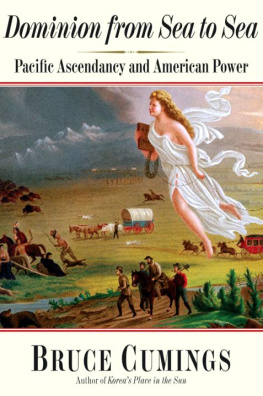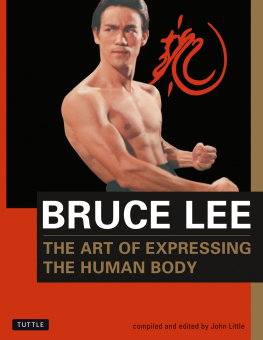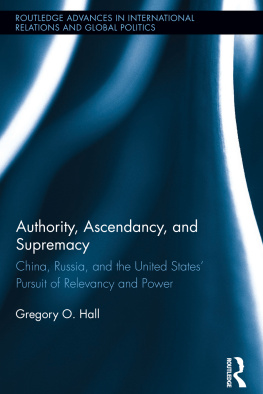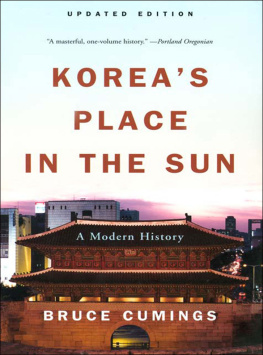
A New Yorker faces west. Saul Steinberg, View of the World from 9th Avenue, 1976. Ink, pencil, colored pencil, and watercolor on paper, z8 x 19 in. (71.1 x 48.3 cm). Private collection, New York. Cover drawing for the New Yorker, March 29, 1976. The Saul Steinberg Foundation/Artists Rights Society (ARS), New York.


California: island in the sun. John Speed's map of the Americas, 1626. Courtesy of the William L. Clements Library, University of Michigan.


John Mix Stanley, The Last of Their Race, 1857. Oil on canvas. Buffalo Bill Historical Center, Cody, Wyoming; 5.75


A westward empire. Emanuel Gottlieb Leutze, Westward the Course ofEmpire Takes Its Way, circa 1861. Mural study. Smithsonian American Art Museum, Bequest of Sara Carr Upton.

Mian Situ, The Golden Mountain Arriving San Francisco, 1865. 2002. Oil on canvas. Courtesy of Mian Situ.

Bencab, Invaders and Resisters, 1980. Acrylic on paper. Courtesy of the artist.


Frederic Remington, Charge of the Rough Riders at San Juan Hill, 1898. Oil on canvas. Courtesy of the Frederic Remington Art Museum, Ogdensburg, New York.


Albert Bierstadt, The Oregon Trail, 1869. Color mural. The Butler Museum of American Art, Youngstown, Ohio.
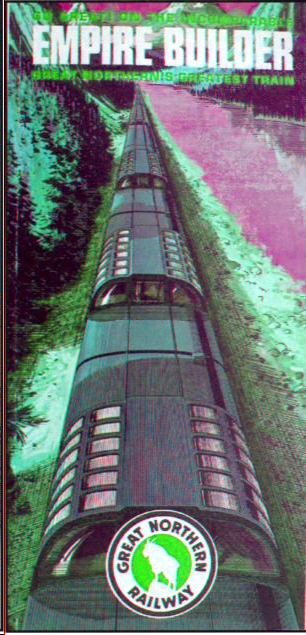
The Great Northern Railway's "Empire Builder." Courtesy of Carlos Schwantes.

Diego Rivera, Allegory of California, 1931. The City Club. Photograph 1986 The Detroit Institute of the Arts. D.R. 2008 Banco de Mexico, "Fiduciario" en el Fideicomiso relativo a los Museos Diego Rivera y Frida Kahlo. Av. Cinco de Mayo no. 2, Col. Centro, Del Cuauhtemoc o6059, Mexico, D.F.
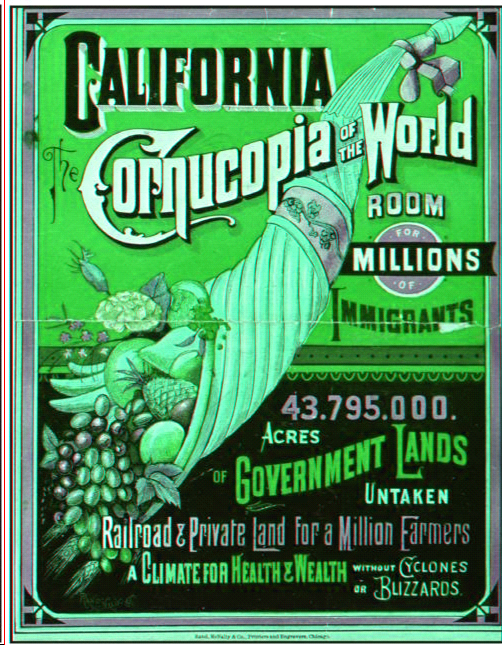
California Cornucopia of the World, a railroad advertisement. Lithographic poster. Rand McNally & Co., c. 1870; negative #41800. Collection of the New-York Historical Society.


Lemon cornucopia. Fruit crate label. Polychrome lithograph, 12 x 9 in. Splendid Brand, June 1938. Collection of the Oakland Museum of California, Gift of Old Promises.
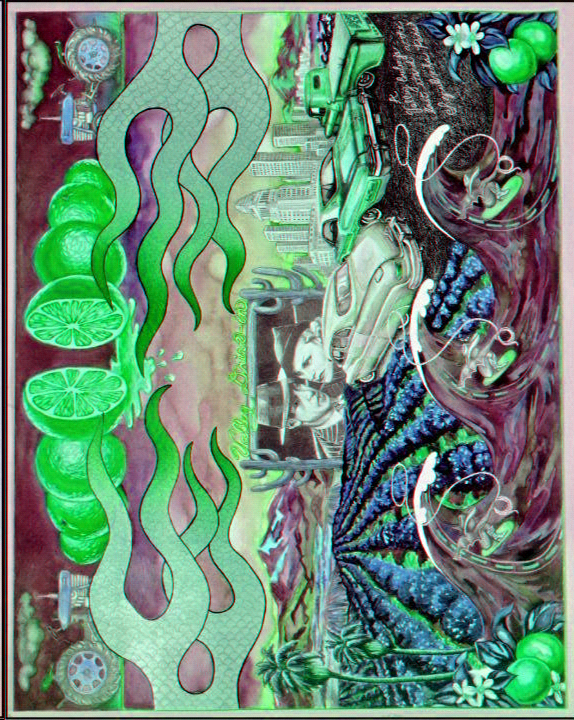

Lynn E. Coleman,A Valley Cowboy's Last Stand at Sepulveda Pass, 1975 Collection of the artist.

To Eleanor Sharts Cumings-Hood
He shall have dominion also from sea to sea, and from the river unto the ends of the earth.
-Psalm 72

Preface
Acknowledgments
I A Frontier of the Mind
CHAPTER 1 The Machine in the Garden
CHAPTER 2 "The Remote beyond Compare": Finding California
II From Sea to Shining Sea. Manifest Destiny
CHAPTER 3 A Continent in Five Easy Pieces
CHAPTER 4 Manifest Destiny's Offspring: Gold, the Continental Railroad, Texas
CHAPTER 5 Abroad in Search of Monsters to Destroy
III Pacc States, New England Peoples
CHAPTER 6 East of Eden: The Pacific Northwest
CHAPTER 7 Edens Lush and Frigid
CHAPTER 8 Pacific Crossings: Asians in the New States
IV Y Crust of the Earth": Protean California
CHAPTER 9 A Garden Cornucopia
CHAPTER 10 "There It Is. Take It": Water and Power
CHAPTER 11 Southern California: Island on the Pacific
V A Tieing Point
CHAPTER 12 The State as Pretense of Itself: Developing the West
CHAPTER 13 Postwar California and the Rise of Western Republicanism
CHAPTER 14 In California's Shadow: The Rest of the West in the Postwar Era
CHAPTER 15 Archipelago of Empire: An American Grid for the Global Garden
CHAPTER 16 Silicon Valley: A New World at the Edge of the Sea
CHAPTER 17 Conclusion: The American Ascendancy
Appendix
Notes
Bibliography
This book develops a Pacific perspective on America's relationship to the world, standing in James Polk's Washington a century and a half ago and coming down to the present, drawing a fairly straight line all the way from the origin and development of California and the West ultimately to the heartland of the People's Republic of China. If Walt Whitman and historian Richard Drinnon had not thought of it first, "facing West" would be the title of this book. In other words, this is not a book about the West or about American involvement in the Pacific. It is about both, as a way of erasing the line between domestic and international perspectives. In exploring the contemporary American ascendancy, I attempt to join together what other authors usually treat separately: domestic and international history, international relations and political economy, and both sides of a vigorous Pacific economy. This book is also about technological change, and how sharp leaps forward in economic growth created a bicoastal national economy that has led the world for more than a century, a development that also transformed, undercut, or simply crushed original American conceptions of the continent they first inhabited nearly 400 years ago: a garden, an Eden, Arcadia, someday a Utopia.

